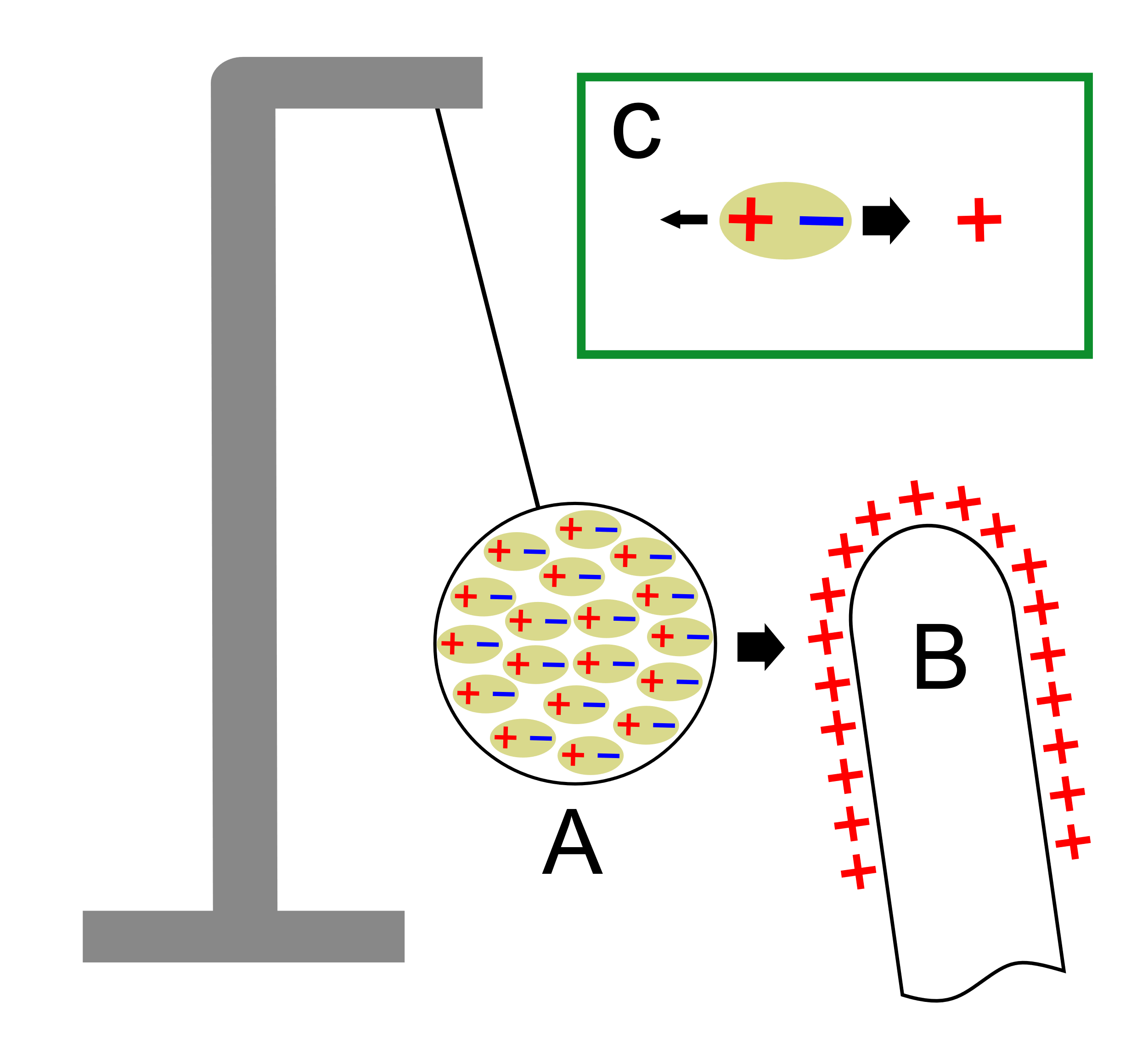
Describe with the help of a diagram an instrument which can be used to detect a charged body.
Answer
499.2k+ views
Hint: The detection of the charges based on the coulomb’s force that causes the motion of the test charge can be done by the Electroscope. The instrument can be regarded as a crude voltmeter that is used to measure the charge quantitatively is known as a crude voltmeter.
Complete step by step answer:
The working principle of the electroscope is based on the atomic structures of the element.
An electroscope consists of the metal knob at the top. The knob is connected to the pair of leaves made out of metal that hangs from the bottom of the metal rods.
The detection of the charges based on the coulomb’s force that causes the motion of the test charge can be done by the Electroscope. The instrument can be regarded as a crude voltmeter that is used to measure the charge quantitatively is known as a crude voltmeter.

When there is no charge the leaves hang loosely downward when the object along with the charge is brought near the electroscope some changes occur.
Consider when the charge is positive. The electrons in the metal electroscope are attracted to the charge and move upwards out of leaves. When this happens, the leaves will have a positive charge and repel each other as we know that the like charges repel. After the removal of the charge, the leaves turn to the original position.
When the negative charge has applied the electrons in the metal of the electroscope repel and move towards the bottom of the leaves. This causes the gain of negative charges on the leaves and the leaves repel.
The response of the electroscope will be like when the charging through the movement of electrons is either into the way or away from the leaves.
Note:
The electroscope detects the charge by the movement of a test object due to the Coulomb electrostatic force acting upon it.
The amount of charge on an object is directly proportional to its voltage.
Complete step by step answer:
The working principle of the electroscope is based on the atomic structures of the element.
An electroscope consists of the metal knob at the top. The knob is connected to the pair of leaves made out of metal that hangs from the bottom of the metal rods.
The detection of the charges based on the coulomb’s force that causes the motion of the test charge can be done by the Electroscope. The instrument can be regarded as a crude voltmeter that is used to measure the charge quantitatively is known as a crude voltmeter.

When there is no charge the leaves hang loosely downward when the object along with the charge is brought near the electroscope some changes occur.
Consider when the charge is positive. The electrons in the metal electroscope are attracted to the charge and move upwards out of leaves. When this happens, the leaves will have a positive charge and repel each other as we know that the like charges repel. After the removal of the charge, the leaves turn to the original position.
When the negative charge has applied the electrons in the metal of the electroscope repel and move towards the bottom of the leaves. This causes the gain of negative charges on the leaves and the leaves repel.
The response of the electroscope will be like when the charging through the movement of electrons is either into the way or away from the leaves.
Note:
The electroscope detects the charge by the movement of a test object due to the Coulomb electrostatic force acting upon it.
The amount of charge on an object is directly proportional to its voltage.
Latest Vedantu courses for you
Grade 11 Science PCM | CBSE | SCHOOL | English
CBSE (2025-26)
School Full course for CBSE students
₹41,848 per year
Recently Updated Pages
Master Class 12 Business Studies: Engaging Questions & Answers for Success

Master Class 12 English: Engaging Questions & Answers for Success

Master Class 12 Social Science: Engaging Questions & Answers for Success

Master Class 12 Chemistry: Engaging Questions & Answers for Success

Class 12 Question and Answer - Your Ultimate Solutions Guide

Master Class 12 Economics: Engaging Questions & Answers for Success

Trending doubts
Give 10 examples of unisexual and bisexual flowers

Draw a labelled sketch of the human eye class 12 physics CBSE

Differentiate between homogeneous and heterogeneous class 12 chemistry CBSE

Differentiate between insitu conservation and exsitu class 12 biology CBSE

What are the major means of transport Explain each class 12 social science CBSE

Draw a diagram of a flower and name the parts class 12 biology ICSE




